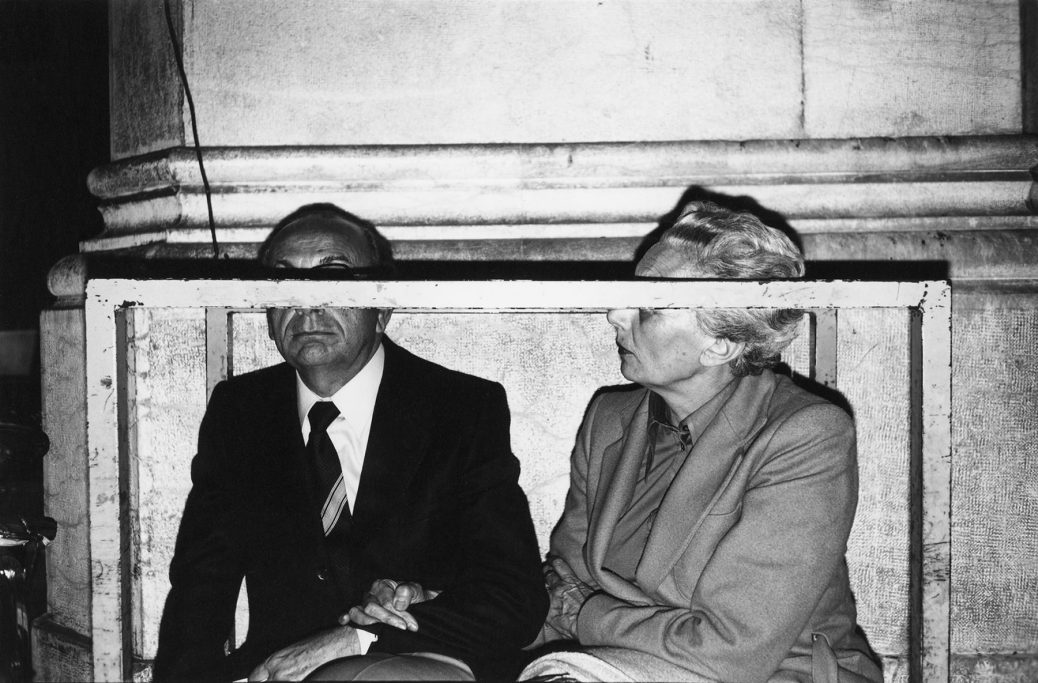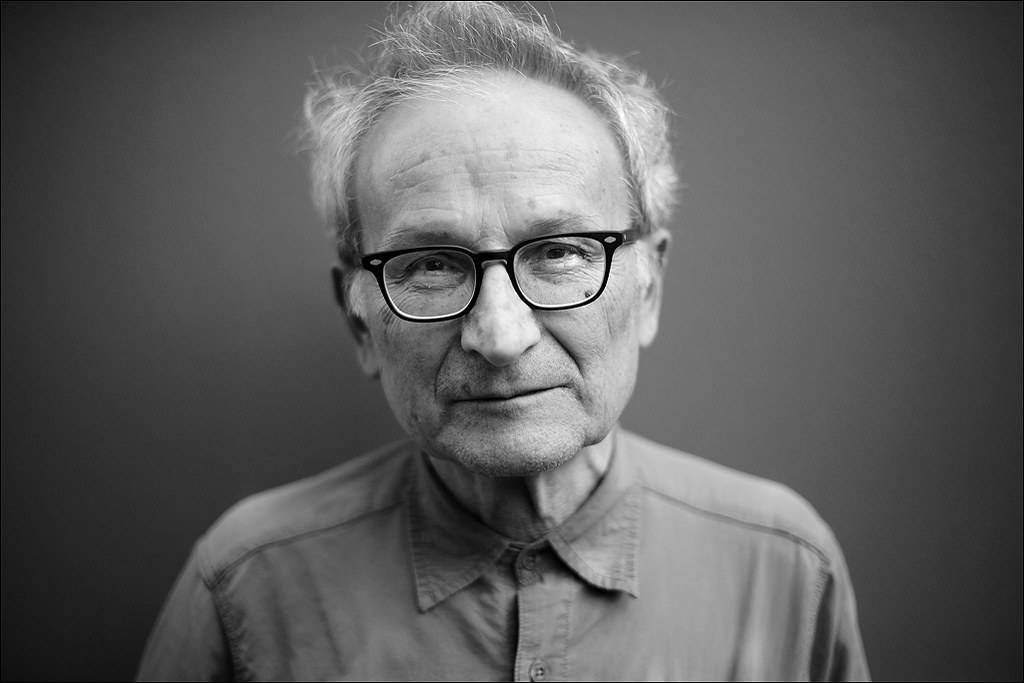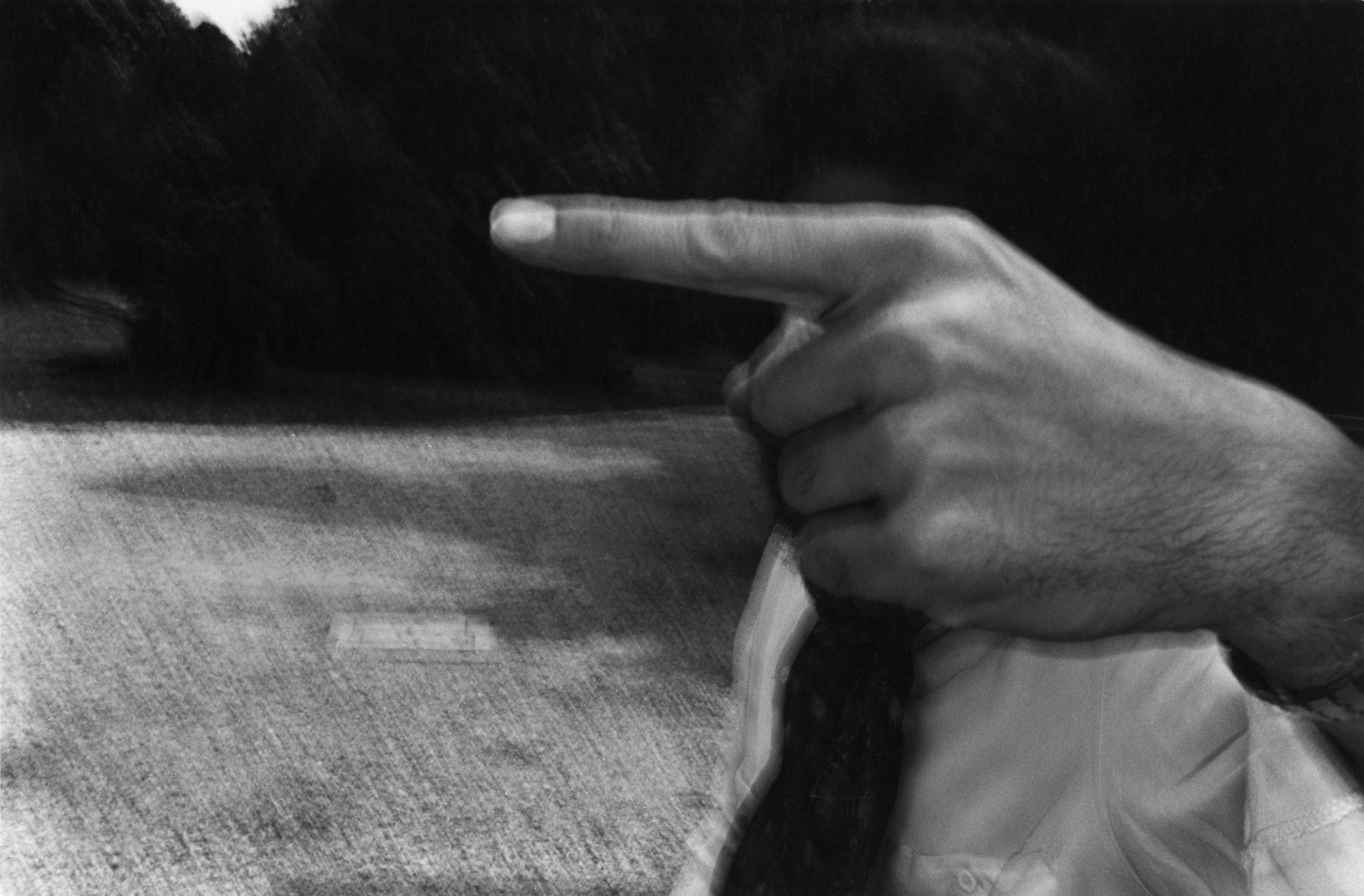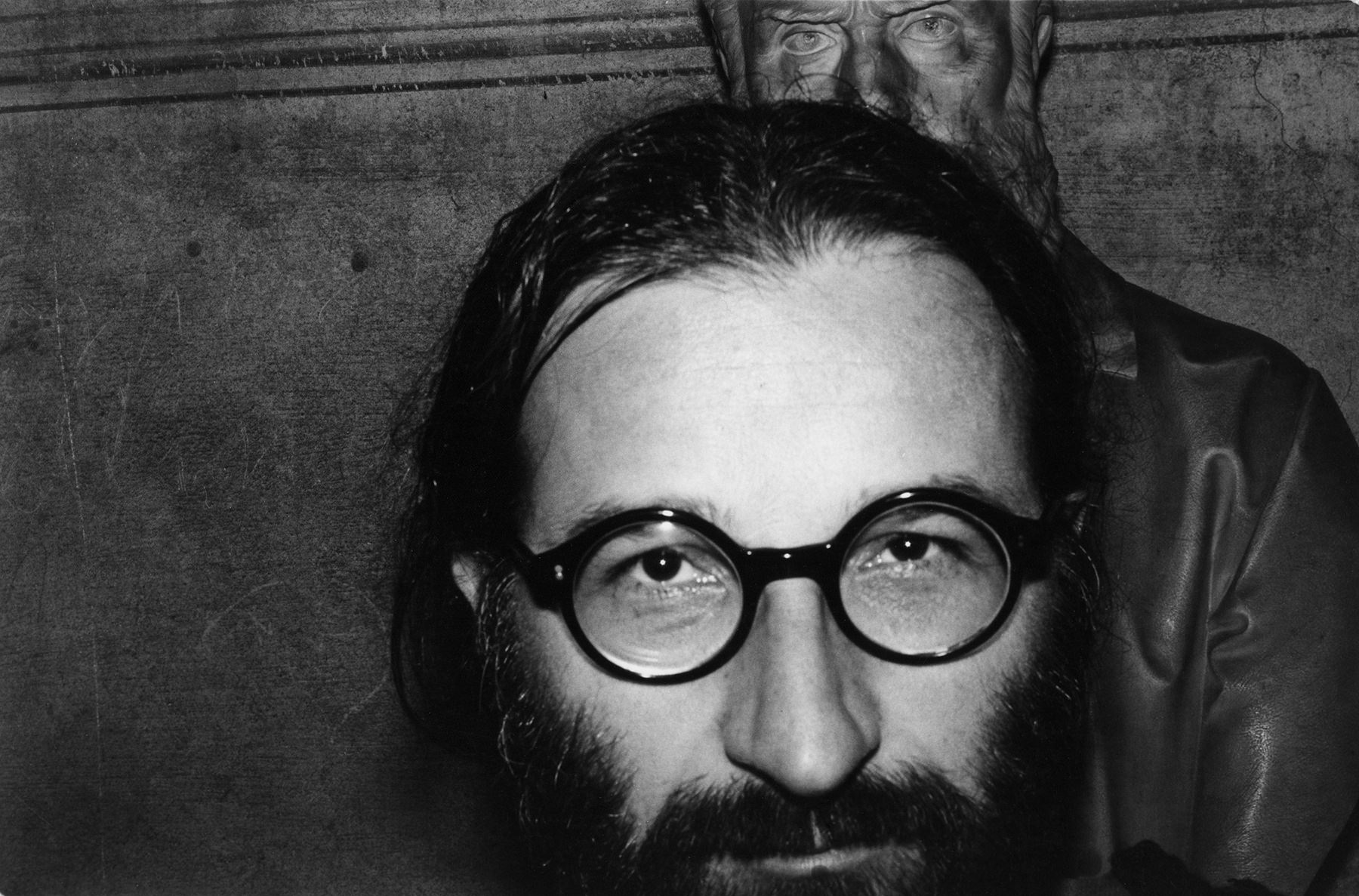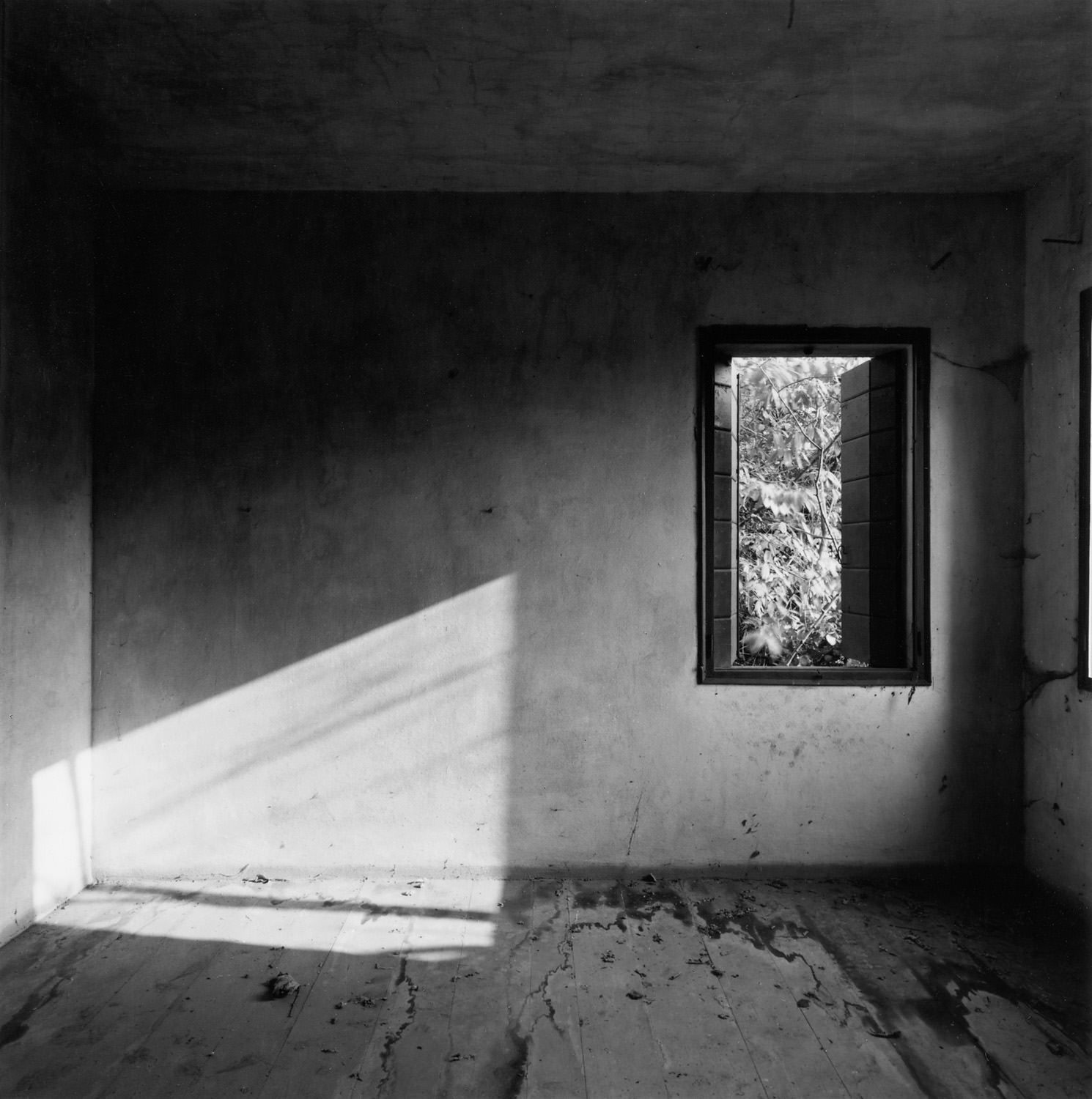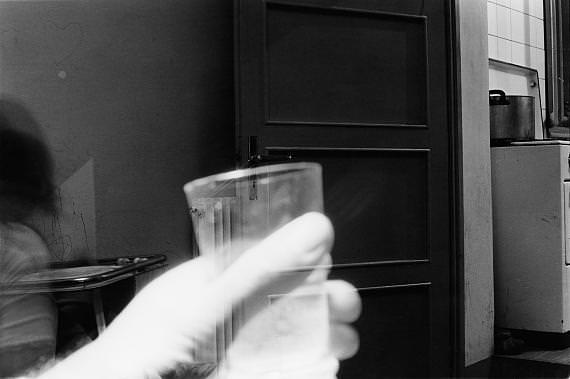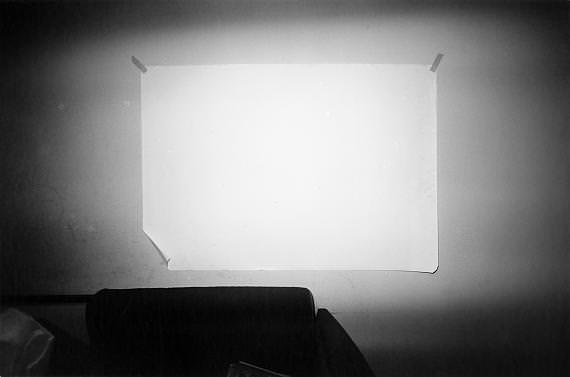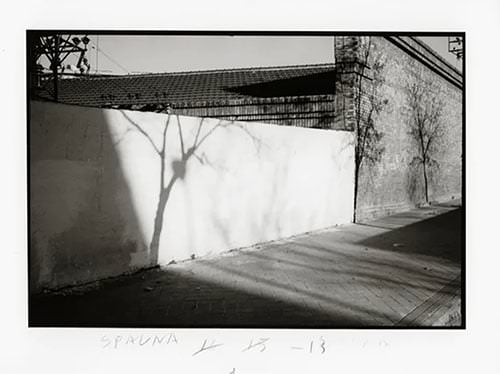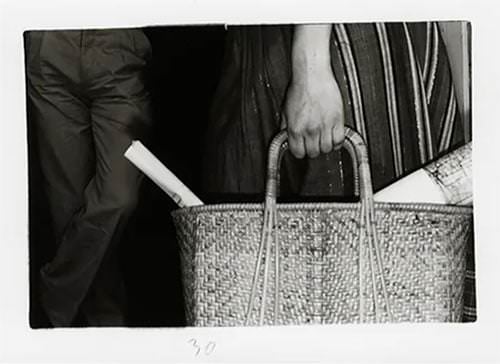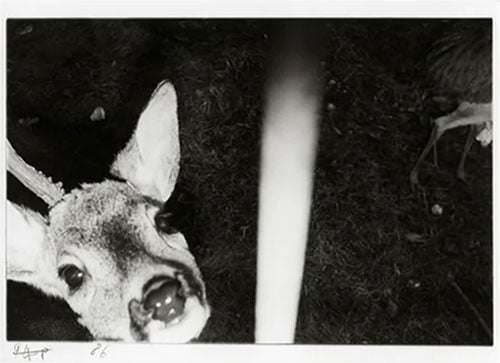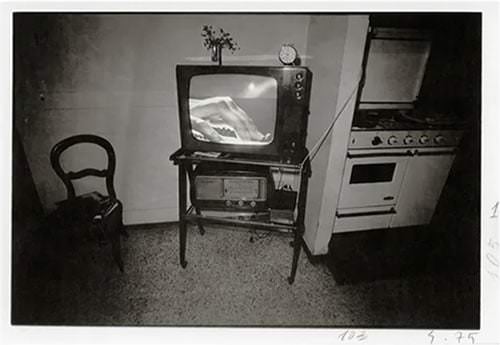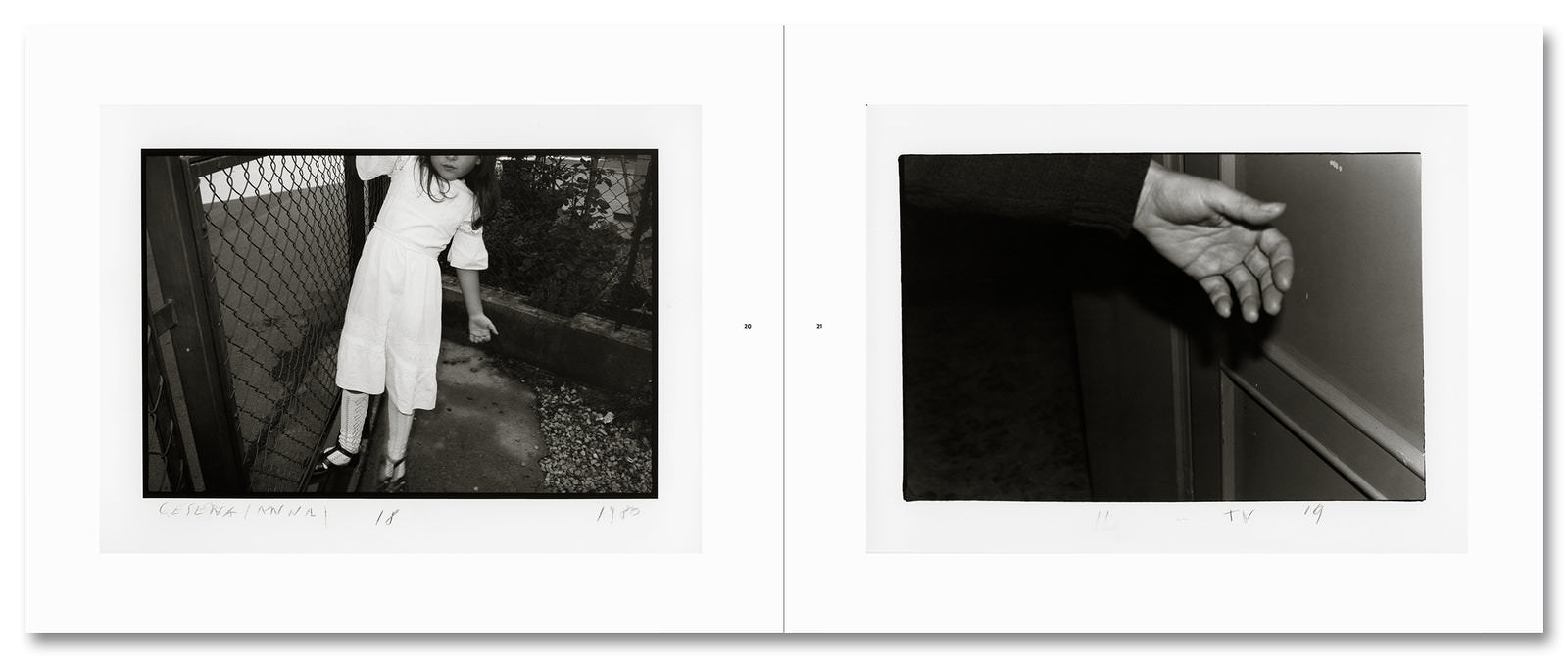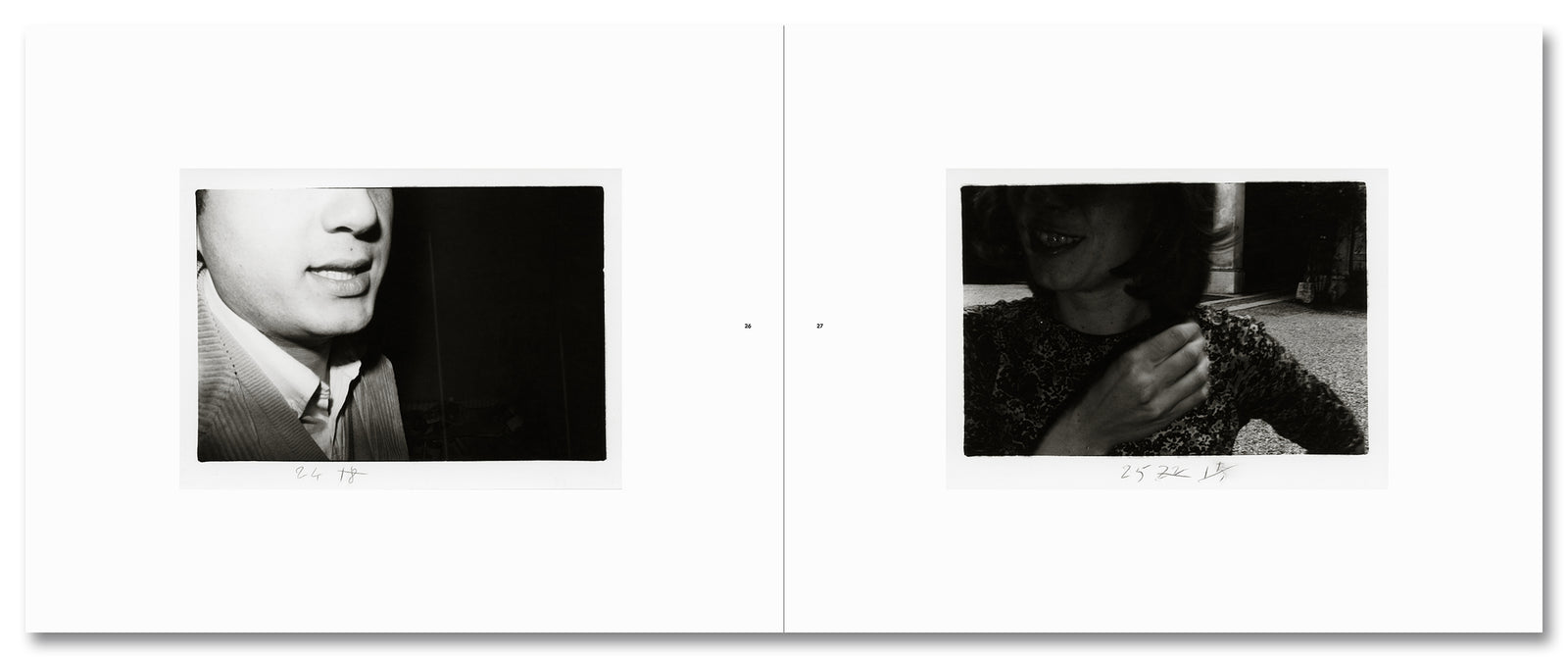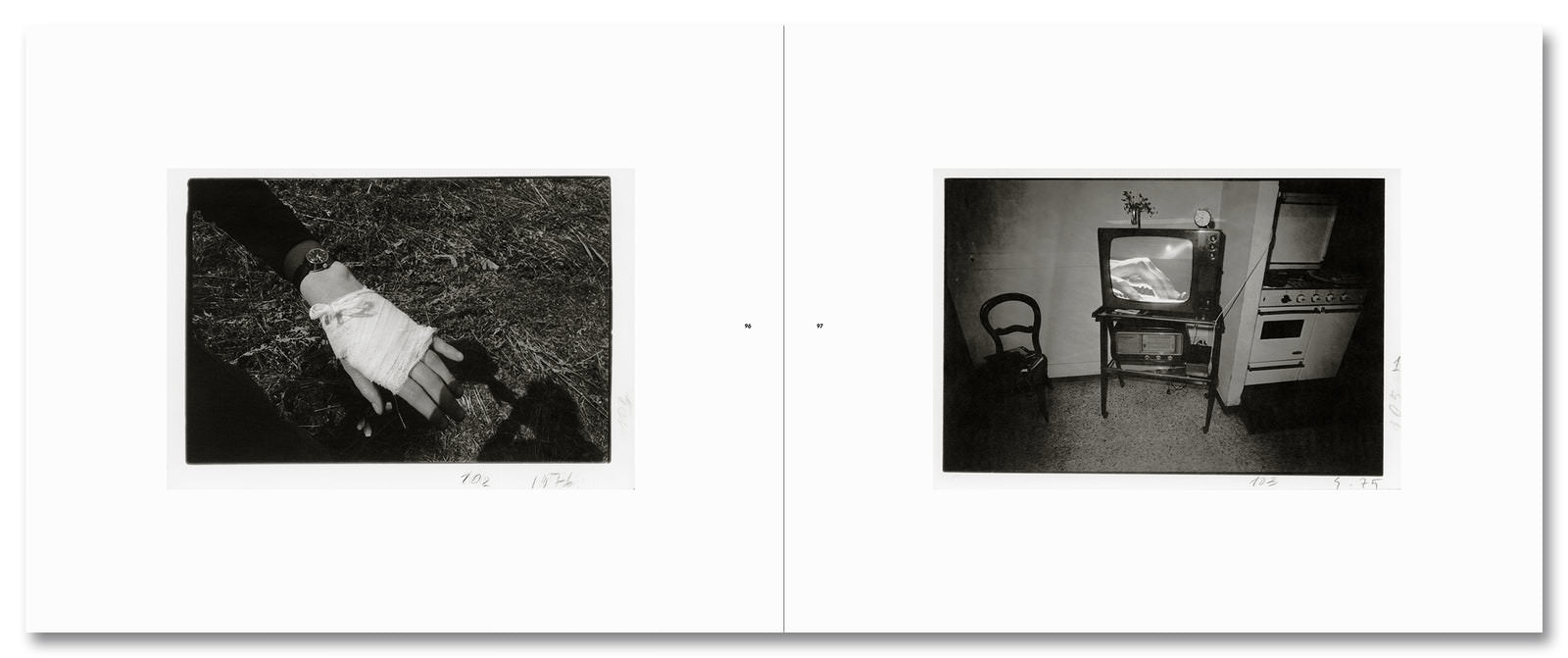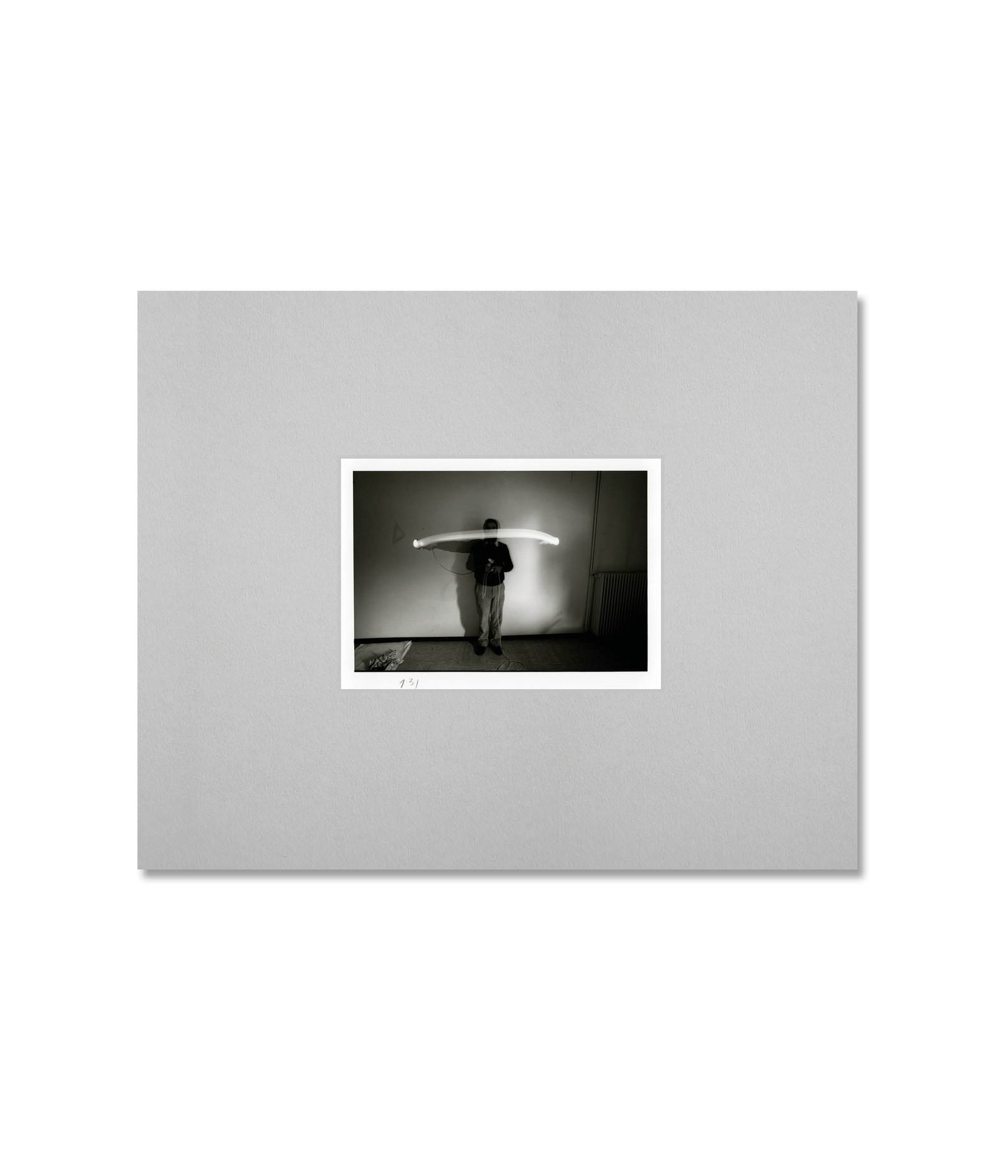Guido Guidi: Di sguincio
Di sguincio is an exhibition of 22 prints by the Italian photographer Guido Guidi, his sixth solo exhibition at Large Glass. It coincides with the publication by MACK of the homonymous volume, the first of a trilogy entitled Album, which brings to fruition a series of over a hundred black-and-white photographs made by Guidi with small-format cameras between 1969 and 1981.
From the published series, the exhibition showcases selected photographs, mostly taken from 1977 to 1980 in Treviso and Preganziol, in Northern Italy, where Guidi taught at the time. This is a key juncture in Guidi’s work, as he continues his experimentation in black-and-white and increasingly in colour before moving to working predominantly in colour with a large format camera in the early 1980s.
Di sguincio is an Italian expression, often associated with looking, that can be translated as obliquely, aslant, asquint, and, by extension, diagonally, furtively, indirectly. This phrase poignantly conveys a key tenet of Guido Guidi’s aesthetics: a tangential gaze that seeks to dismantle received views, like the frontal view often associated with photography, and, by extension, to its purported verisimilitude or indexicality. Instead, Guidi’s photography favours an accidental gaze, aimed at uncovering unexpected slants to everyday objects, people or places, for which in the early 1980s he coined the term of ‘qualsiasità’, what-so-everness.
In this series, Guidi experiments playfully with chance or staged encounters with friends, family, objects, and also animals, seemingly without looking, or only through the corner of his eye as the series title suggests. Many of these photographs focus on details of objects, scenes, or parts of people’s bodies, often employing medium close-ups which flaunt a lower framing, taken at chest level, and regularly foreground the subjects’ hands. These hands work as metonyms for photography as they point to things outside the frame, seize translucent objects like glasses, or draw with light, repeatedly staging a performance of the act of photographing.
About the Author
Guido Guidi (born January 1, 1941) is an Italian photographer. His work, spanning over more than 40 years, has focused in particular on rural and suburban geographies in Italy and Europe. He photographs places that are normally overlooked. His published works include In Between Cities, Guardando a Est, A New Map of Italy and Veramente.
Guidi was born in Cesena, Italy. He enrolled in 1959 at IUAV and then at the School of Advanced Studies in Industrial Design in Venice. He followed, among other courses, the ones offered by Bruno Zevi, Carlo Scarpa, Luigi Veronesi, and Italo Zannier.
He started taking pictures in 1956 and continuously in 1966. Since 1989 he has taught Photography at Accademia di Belle Arti in Ravenna and he is part of the scientific committee for the project “Linea di Confine” (Rubiera, RE). Since 2001 he has taught at the IUAV Design e Art faculty in Venice.
His later publications include Per Strada; A New Map of Italy; and Carlo Scarpa’s Tomba Brion. He has shown his work at the Guggenheim and Whitney museums in New York, at Centre Pompidou in Paris, at the Venice Biennial and at Canadian Centre for Architecture in Montréal. His work is held in the collections of the Centre Pompidou in Paris, of the Canadian Centre for Architecture in Montréal, of the San Francisco Museum of Modern Art, and of the Musée d’Art moderne de la Ville de Paris.
Guidi began experimenting in the late 1960s with pseudo-documentary images that interrogated photography’s objectivity. Influenced by neorealist film and conceptual art, in the 1970s he began investigating Italy’s man-altered landscape. Working in marginal and decayed spaces with an 8×10 large format camera, he creates dense sequences intended as meditations on the meaning of landscape, photography, and seeing. Later he investigated the life and death of modernist architecture, with projects on Scarpa, van der Rohe, and Le Corbusier. Photography for Guidi is something autobiographical. It is synonymous with inhabiting, and the camera is the instrument that allows him to observe, appropriate and collect what lies beyond his doorstep.
“Guidi was a leading voice in the resurgence of Italian photography of the 1970s and 1980s”. “Since then, working mostly in colour with a large-format camera, he has patiently returned to the same places – his native Romagna and the area around Venice – documenting the shift from a rural to a post-industrial landscape.” (via Wikipedia.org)
Guido Guidi: Di sguincio
3 Feb—11 Mar 2023
Large Glass Gallery – London – UK

